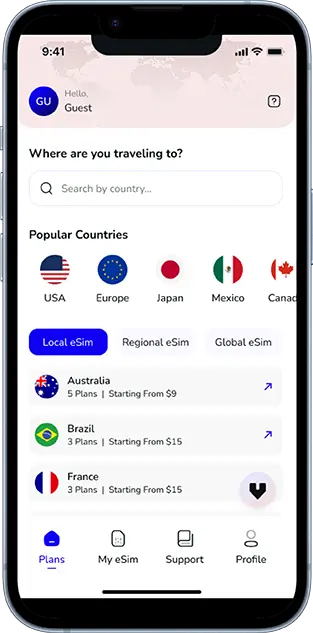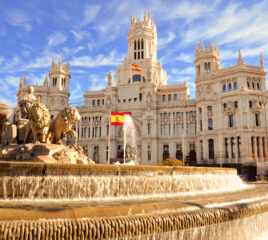Note that iPhone devices from Mainland China aren’t eSIM compatible. Also iPhone devices from Hong Kong and Macao aren’t compatible (except for iPhone 13 Mini, iPhone 12 Mini, iPhone SE 2020 and iPhone XS)
Milan is a city that feeds the senses – not just with art and architecture, but with every aroma drifting from a street cart, every clink of a wine glass in a bustling market, and every handmade pasta rolled in a neighborhood cooking class. Beyond its polished image of runways and Renaissance, Milan invites travelers to discover its true flavor one bite at a time. Whether you’re wandering through food-filled alleys or signing up for a lesson in risotto perfection, the city’s culinary heartbeat is impossible to ignore.
Where Flavor Meets Culture in Milan
For many, Milan conjures images of glossy fashion weeks, Gothic cathedrals, and sleek design. But beneath its polished surface lies another identity – one rooted in taste, tradition, and street-level authenticity. While travelers often flock to its museums and luxury boutiques, true cultural immersion in Milan begins with a fork in hand.
Why food? Because food in Milan is not just nourishment – it’s ritual, identity, and innovation served on a plate. From early-morning coffee rituals to late-night panzerotti snacks on a cobbled corner, every bite offers a glimpse into how Milanese life unfolds.
In this blog, we explore Milan through its most flavorful experiences – beginning with its bustling street eats, then diving into hands-on cooking classes and hidden food markets in Parts Two and Three. Whether you’re a first-time visitor or a returning foodie, these experiences reveal the city through a deeper, more delicious lens.
And in a city as dynamic as Milan, having access to real-time recommendations, maps, and translation tools is key. That’s why many travelers now rely on digital connectivity like eSIMs – for seamless exploration without missing a beat.
A Taste of Milan Starts in the Streets
Milan may be known for high fashion and Renaissance masterpieces, but its real soul simmers in the back alleys, corner kiosks, and bustling food stalls. For travelers who want to go beyond the museum lines and designer boutiques, the city’s vibrant street food scene offers an accessible, authentic way to savor Milanese life.
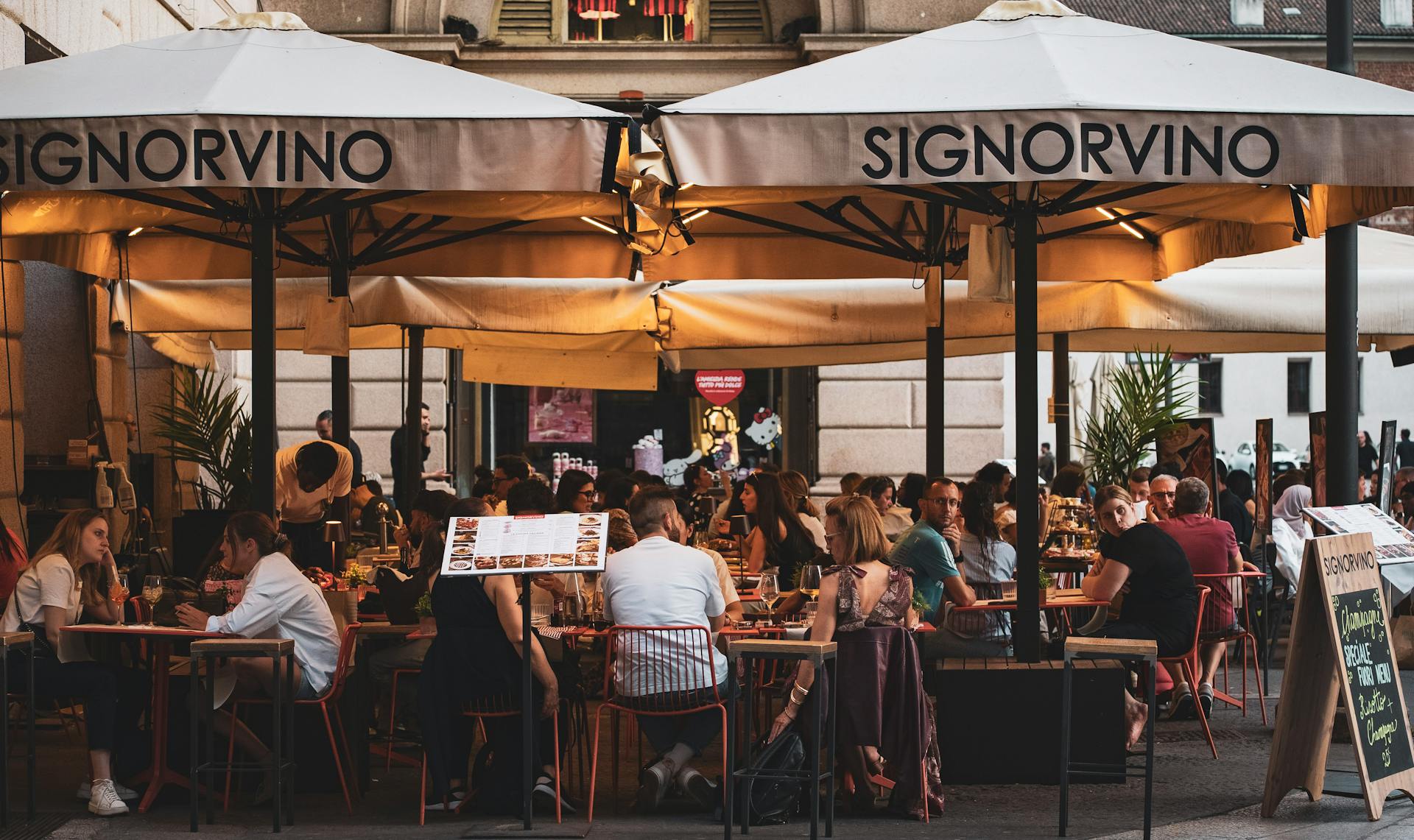
From crispy panzerotti to traditional risottos dished out from food trucks, Milan’s street food doesn’t just fill your stomach – it tells a story of heritage, creativity, and cultural exchange. And for modern travelers, staying connected to navigate this culinary maze is easier than ever with digital tools like eSIMs. Whether finding the next must-visit stall or translating ingredients in real-time, a digital connection enriches every bite.
This blog dives deep into Milan’s culinary underbelly, starting with its mouthwatering street eats, before continuing in Part Two with hands-on cooking classes and secret food markets.
Travel Smart With VOYE15
Maximize your Milan adventure and save while you explore
Why Street Food is Milan’s New Luxury?
In a city known for luxury, Milan’s street food offers a surprising contrast – affordable, fast, and rich with local character. It caters to office-goers on lunch breaks, students, and tourists alike. Yet, despite its accessibility, it doesn’t compromise on taste or tradition.
The Historical Influence
Much of Milan’s street food is rooted in northern Italian culinary heritage – but with a twist. Thanks to Milan’s role as an international hub, global influences like Arabic, Chinese, and South American flavors have blended with local traditions, creating a unique street food culture.
Top Street Foods to Try in Milan
Here’s a curated list of must-try Milanese street eats and where to find them:
1. Panzerotti
What it is: Fried dough filled with tomato, mozzarella, and sometimes ham.
Where to try it: Luini, just behind the Duomo, has been a go-to spot since the 1940s. Expect a line, but it moves fast – and it’s worth the wait.
Insider tip: Grab one just before sunset and enjoy it at the nearby Piazza dei Mercanti.
2. Risotto alla Milanese (Street Style)
What it is: A portable version of the iconic saffron risotto served in small bowls or cups.
Where to try it: Milaneseat eat food truck or various weekend food festivals.
Why it’s special: Traditional risotto is often reserved for fine dining, but food trucks have made it available on the go – and at a fraction of the cost.
3. Piadina with Northern Flair
What it is: A thin Italian flatbread sandwich stuffed with a variety of fillings – from cured meats to grilled veggies.
Where to try it: Piadineria Artigianale Pascoli in Brera offers both traditional and innovative options.
4. Arrosticini
What it is: Skewers of grilled lamb or pork seasoned with rosemary and salt.
Where to try it: Look for stalls around Navigli during weekend markets.
Perfect with: A glass of local red wine from a nearby bar. It’s common to grab skewers and eat them while strolling along the canal.
5. Cassoeula in a Bun
What it is: A twist on the hearty pork and cabbage winter stew, served as a pulled-pork sandwich.
Where to try it: Panini Durini occasionally offers this during colder months as a seasonal special.
Note: Cassoeula is intense and not for the faint of heart – but if you love bold flavors, this is a must-try.
Stay Connected in Style
Experience Milan’s elegance with uninterrupted mobile coverage
Neighborhood Food Walks You Shouldn’t Miss
The beauty of Milan’s street food lies not only in the food itself but in the neighborhoods that serve it. Here are the best districts for street food crawls:
Brera
A historic art district turned bohemian chic, Brera offers artisan gelaterias, gourmet panini stands, and wine bars. Grab food to go and wander its cobbled lanes.
Navigli
Famous for its canals and nightlife, Navigli transforms into a buzzing food hub every evening. Expect aperitivo deals, late-night pizza slices, and pop-up stalls.
Isola
Trendy and youthful, Isola is where Milan’s indie spirit thrives. You’ll find vegan food trucks, ethnic street eats, and organic bakeries.
Porta Romana
Less touristy but full of flavor. Try local bakeries selling fresh focaccia, old-school espresso bars, and hole-in-the-wall kebab stands that locals swear by.
When to Find the Best Street Food in Milan?
Timing matters. Milan’s street food isn’t always available 24/7 – many vendors follow set schedules or appear during local events.

Daily Bites
- Lunch Rush (12:00 – 2:00 PM): Office workers flock to kiosks for sandwiches and pasta.
- Evenings (6:00 – 9:00 PM): Food trucks set up in hotspots like Darsena and Navigli.
Special Events and Food Festivals
- Street Food Parade (Spring/Summer): Rotating food trucks in Piazza Duca d’Aosta and around the Sempione area.
- East Market Milano (monthly): A blend of vintage shopping and global street eats.
For exact locations and schedules, consider using travel apps that work smoothly with an eSIM – many of which offer live updates and local maps.
How Street Food Reflects Milanese Identity?
Street food isn’t just about snacking – it’s about storytelling. Each dish reflects:
- Migration Patterns: Dishes like falafel wraps or curry arancini show how Milan embraces international cultures.
- Seasonal Eating: Vendors often change menus with the weather – warm polenta in winter, fresh burrata in summer.
- Creative Experimentation: Expect mashups like sushi burritos or vegan bresaola.
This dynamic food scene tells us something important: Milanese cuisine is never static. It evolves while respecting tradition, just like the city itself.
Tips for a Smoother Street Food Experience
Eating on the streets of Milan can be a joyous experience – if you know what to look out for. Here are practical tips:
1. Go Cashless with Confidence
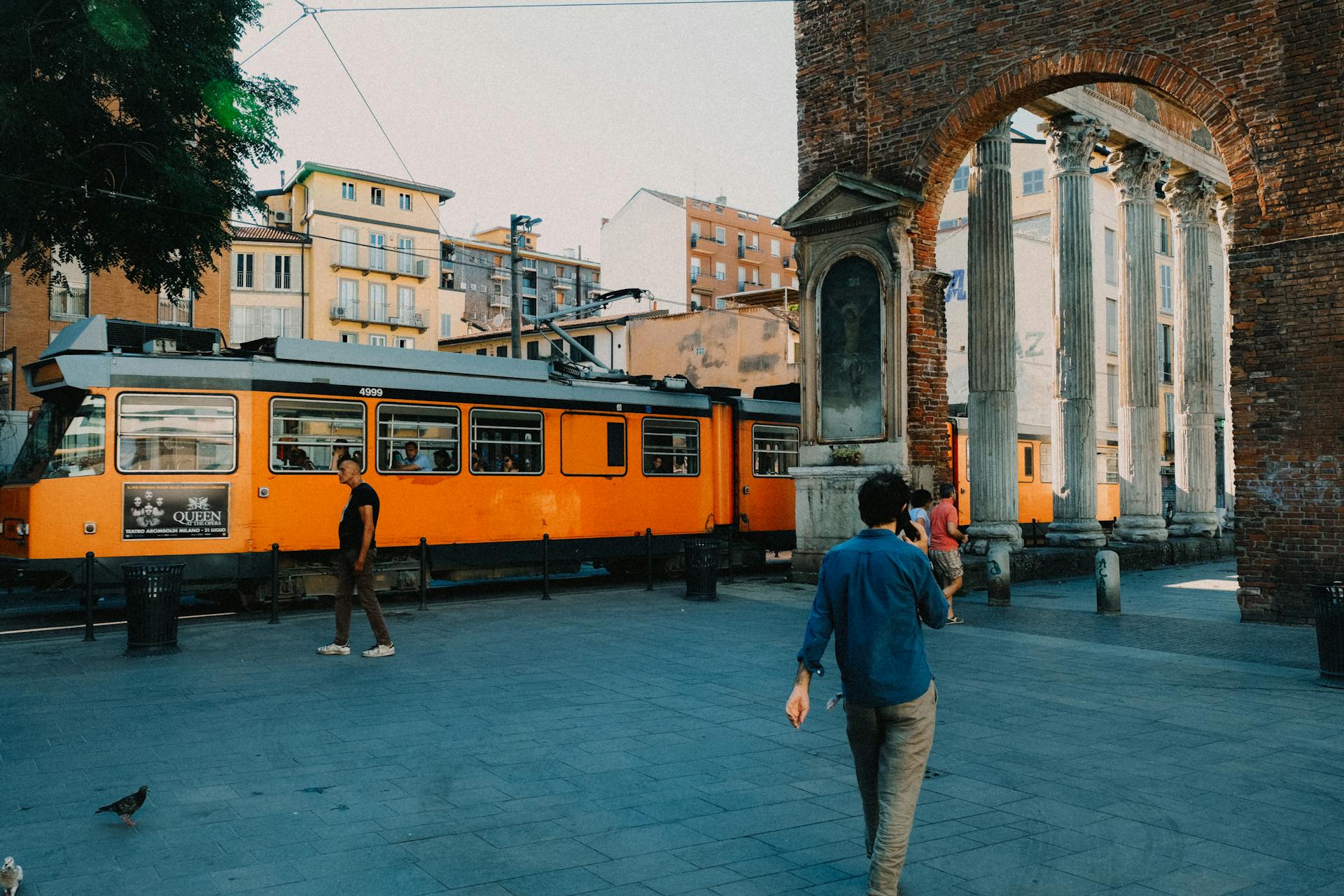
Most vendors now accept digital payments. Having an eSIM-enabled phone ensures you can use Apple Pay or Google Pay seamlessly.
2. Bring Your Cutlery
Eco-conscious travelers often carry a reusable fork or chopsticks – especially handy when vendors only provide toothpicks or wooden skewers.
3. Learn the Local Etiquette
- Don’t eat directly on church steps or monuments.
- Always throw waste in designated bins.
- Don’t expect tables – these are meals on the move.
VOYE15: Milan, Simplified
Use your 15% off code for instant eSIM activation
Local Voices: Street Vendors Who Are Changing the Game
Antonio from “Riso On The Road”
We wanted to make risotto more accessible. Everyone thinks it belongs in a fancy restaurant, but we serve it from a truck, and people love it.
Elena from “Panzerotti Pop”
Tourists are surprised to see how diverse Italian snacks can be. Our version includes spicy nduja, something you don’t usually find in Milan.
Soft Touch of Digital Convenience
In a fast-paced food scene like Milan’s, staying connected helps:
- Translate menus in real time
- Find your way to hidden trucks and markets
- Get food safety reviews instantly
With a prepaid eSIM plan, there’s no need to fumble with physical SIM cards or rely on patchy Wi-Fi. It’s an easy, instant way to access everything Milan has to offer, especially when navigating food festivals or street corners off the tourist grid.
Why Cooking Classes in Milan Are Worth Your Time?
In Italy, food isn’t just prepared – it’s performed. Recipes are passed down orally, ingredients are selected with ceremony, and even stirring a pot is done with intent. Cooking classes offer more than instruction; they give you a seat at the table of Milanese life.
Whether you’re a novice or an experienced cook, Milan’s culinary schools, home kitchens, and market-based workshops provide meaningful, hands-on experiences.

Top Cooking Experiences in Milan
1. Traditional Milanese Cuisine with a Local Host
Where: Private home kitchens in Porta Venezia or Brera
What you’ll learn: How to make ossobuco, risotto alla Milanese, and tiramisu from scratch
Why it’s unique: These classes often include stories, family traditions, and recipes you won’t find in any cookbook.
Added Bonus: Many hosts send you home with custom spice blends or handwritten recipe cards.
2. Pasta-Making Workshop in Navigli
Where: Culinary studios along the Naviglio Grande
What you’ll learn: Handmade tagliatelle, gnocchi, and ravioli, plus sauces like ragù and walnut cream
Duration: 2.5–3 hours
These workshops combine practical instruction with a celebratory sit-down meal, usually with wine pairings. You knead, roll, and fill – and then enjoy your creation with a group of fellow travelers or locals.
3. Aperitivo Masterclass: Beyond the Spritz
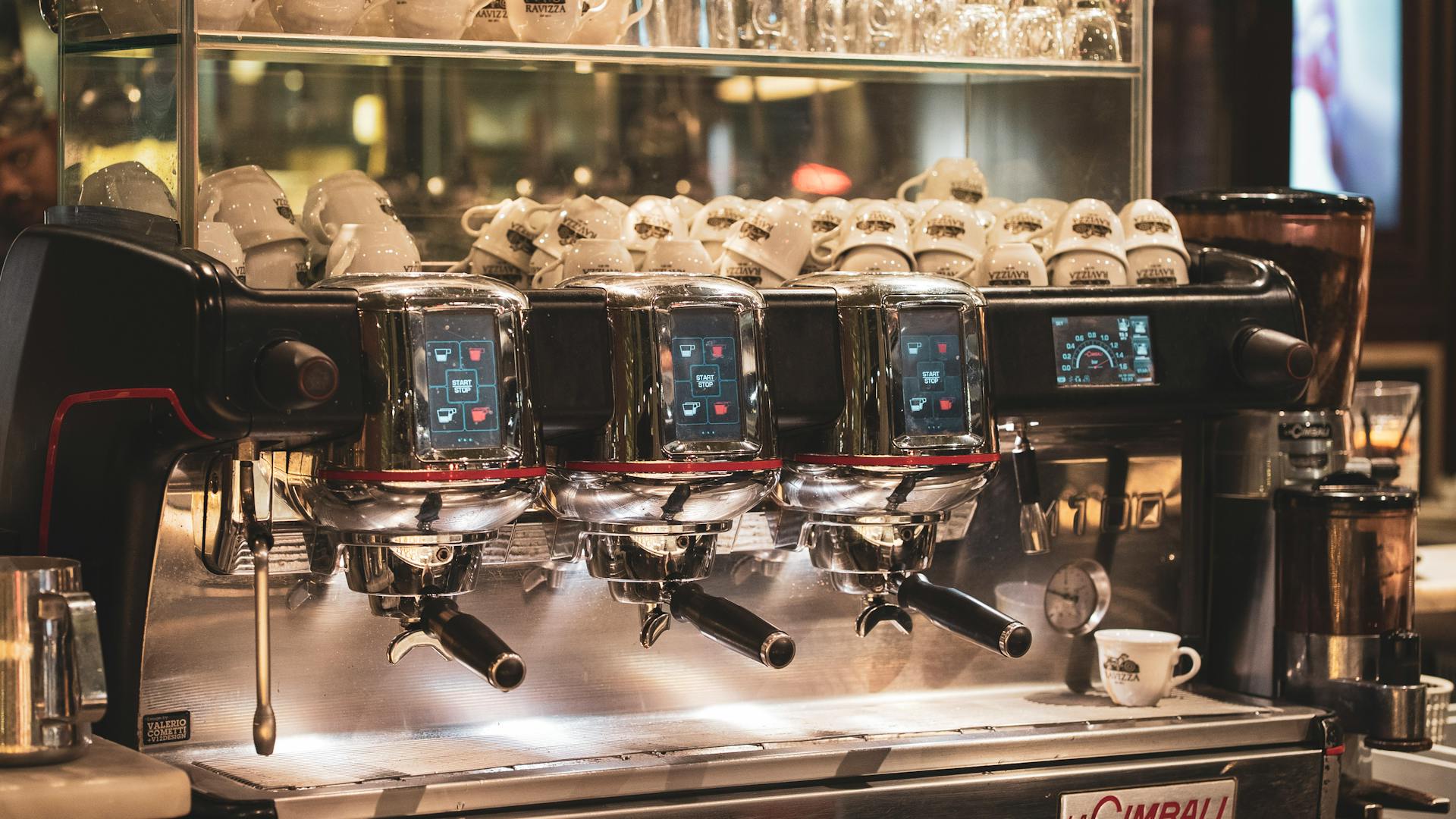
Where: Mixology schools and food labs in Isola
What you’ll learn: The cultural history of the Italian aperitivo, with hands-on instruction in creating Negronis, Americanos, and Milanese-style cocktails, plus small plate pairings.
Includes: Guidance on plating finger foods like crostini, stuffed olives, and regional cheeses.
This is an excellent way to understand Milan’s “pre-dinner” ritual, an experience that combines socializing, light bites, and sophisticated drinks.
4. Market-to-Table Culinary Tours
Some classes begin with a shopping trip to a local market, where participants learn how to choose fresh produce, seafood, and herbs, and then return to cook.
Where: Often starts at Mercato di Via Fauche or Mercato Wagner
Best for: Visitors who want to understand ingredients and how Italians approach seasonal cooking.
5. Vegan and Gluten-Free Classes for Conscious Foodies
Milan has embraced dietary diversity. Vegan and gluten-free cooking classes cater to health-conscious or allergy-sensitive travelers without sacrificing flavor.
Where: La Sana Gola or Vegan Food Academy Milano
What you’ll learn: Lentil lasagna, dairy-free risottos, nut-based cheeses, and desserts like chickpea brownies.
Move Like a Local
Skip the roaming fees and connect across Italy instantly
What You’ll Take Away (Besides Recipes)?
- A real connection to Milanese people and values
- Kitchen skills that go beyond one-time use
- Cultural knowledge – understanding why Italians do things a certain way in the kitchen
- Local tips and restaurant recommendations from your instructors
Hidden Food Markets of Milan: Where Locals Shop
Markets are where Milan’s food culture comes alive – loud, colorful, aromatic, and buzzing with interaction. They’re the pulse of the community, offering everything from truffle oil and aged balsamic to cheap eats and kitchen tools.
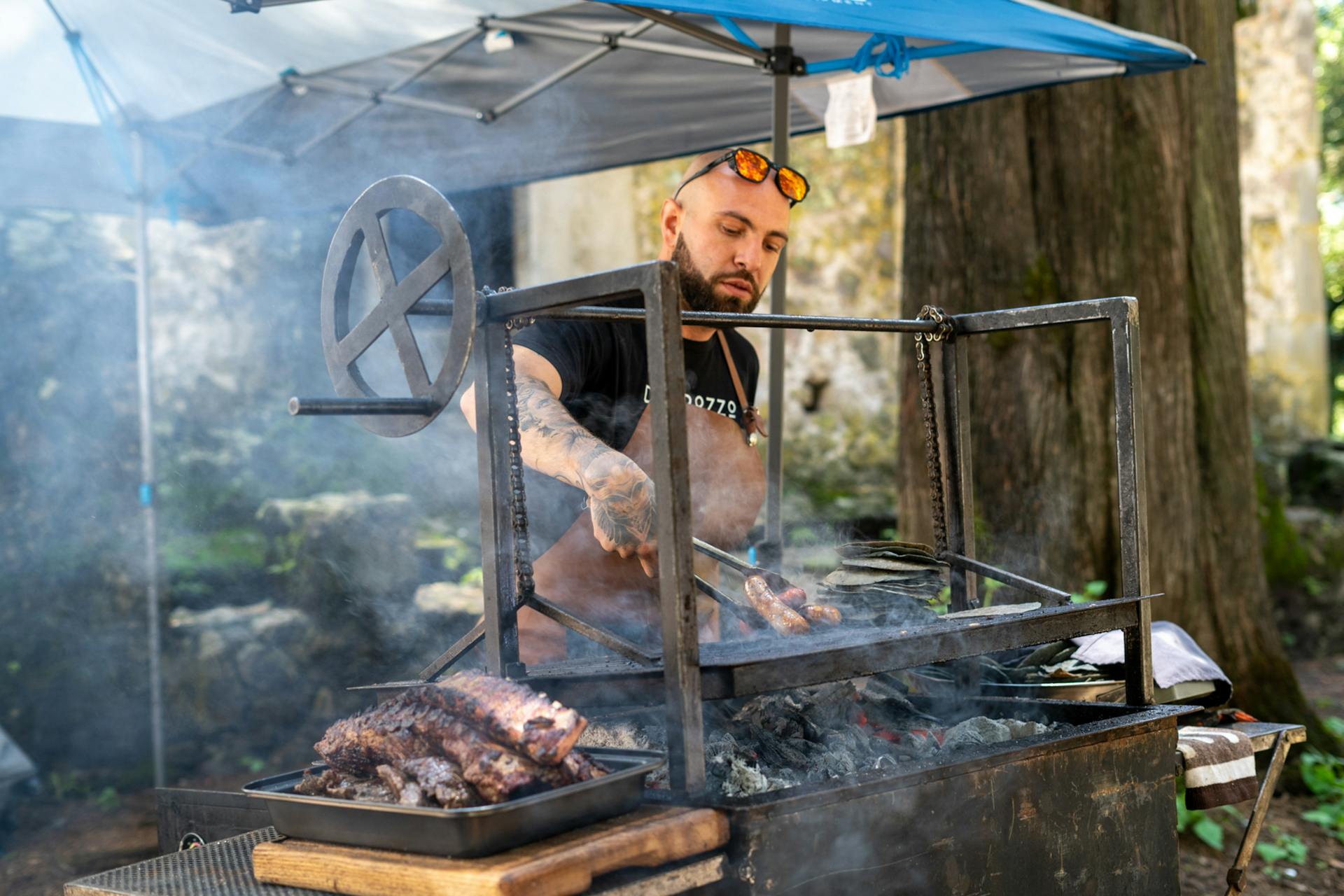
Here are some of Milan’s best-kept secrets for food markets:
1. Mercato di Via Fauche
Location: Northwest of Milan, near Chinatown
What to expect: An elegant, semi-covered market with artisan cheeses, gourmet mushrooms, fresh flowers, and cured meats.
Best day to go: Tuesday or Saturday morning
Tip: Ask the cheese vendor for a sample of Taleggio – a washed-rind cheese that’s a Lombardian classic.
2. Mercato Wagner
Location: Western Milan (near Pagano)
Why it’s great: A local neighborhood market that’s not swarming with tourists. Expect high-quality produce, fresh bread, and household items.
Pro Tip: The fishmongers here are some of the best in the city. Come early if you want the top picks.
3. East Market Milano
Location: Lambrate area
What makes it different: A hip blend of vintage fashion, design goods, vinyl, and street food. Though not a traditional food market, it offers a global street food court experience with vendors from Latin America, Asia, and the Middle East.
Best for: Travelers seeking international flavors or food photography opportunities.
4. Mercato Comunale di Piazza Lagosta
Location: Isola
Highlights: Trendy, young crowd – a great spot for trying natural wines, artisanal coffee, and farm-to-table pop-ups.
Navigating smaller markets like these, checking vendor ratings, or translating Italian signage is easier with a stable internet connection. With a prepaid eSIM for Italy, travelers can instantly connect without relying on spotty Wi-Fi – making every market trip more informed and enjoyable.
The Culture of Shopping in Milan’s Food Markets
Shopping here is more than a transaction. Vendors want to know what you’re cooking, offer recipe suggestions, and may even throw in a free herb bundle or extra fig if they like you.
Cultural Tips for a Great Experience:
- Greet with a smile: A friendly “Buongiorno” opens doors – and better service.
- Don’t self-serve: Let the vendor handle produce unless it’s explicitly stated otherwise.
- Cash is king: Though many now accept digital payments, it’s good to keep some euros on hand.
- Ask questions: Vendors are proud of their goods – and happy to explain their origins or uses.
Milan Without Limits
No tourist traps, just seamless data wherever you go
Connecting the Dots: Food, Culture & Technology
In the same way that food reflects tradition and values, modern travel tools reflect how people engage with the world today. Booking classes online, looking up market hours, or video-calling a friend to show off your homemade ravioli – all require smooth, reliable connectivity.
That’s where eSIM technology quietly enhances your food journey. Whether it’s using a map app to find a tucked-away market or uploading your aperitivo-making skills to social media in real time, a local eSIM plan simplifies travel and removes stress.
Culinary Souvenirs: What to Bring Home
Don’t leave Milan empty-handed. Some of the best souvenirs are edible, memorable, and easy to pack.
- Saffron threads from farm stalls at Mercato Wagner
- Mini panettone or chocolate pralines from Pasticceria Marchesi
- Bottled risotto kits – vacuum-packed with all the dry ingredients needed
- Truffle oil or balsamic pearls from East Market specialty stands
- Locally crafted aperitivo bitters or herb blends
These souvenirs are lightweight, practical, and carry the spirit of Milan home with you.
Local Recommendations: Cooking Class Instructors Share
Chef Giulia, Pasta Master
I’ve taught over 400 travelers. They often come for the recipes, but leave with stories, laughter, and a new respect for Italian kitchen culture.
Marco & Elena, Market-to-Table Hosts
We love showing people how Milan eats. Not just where – but why. The market isn’t a place. It’s a rhythm, a ritual.
Why Milan Is a Culinary City That Surprises?
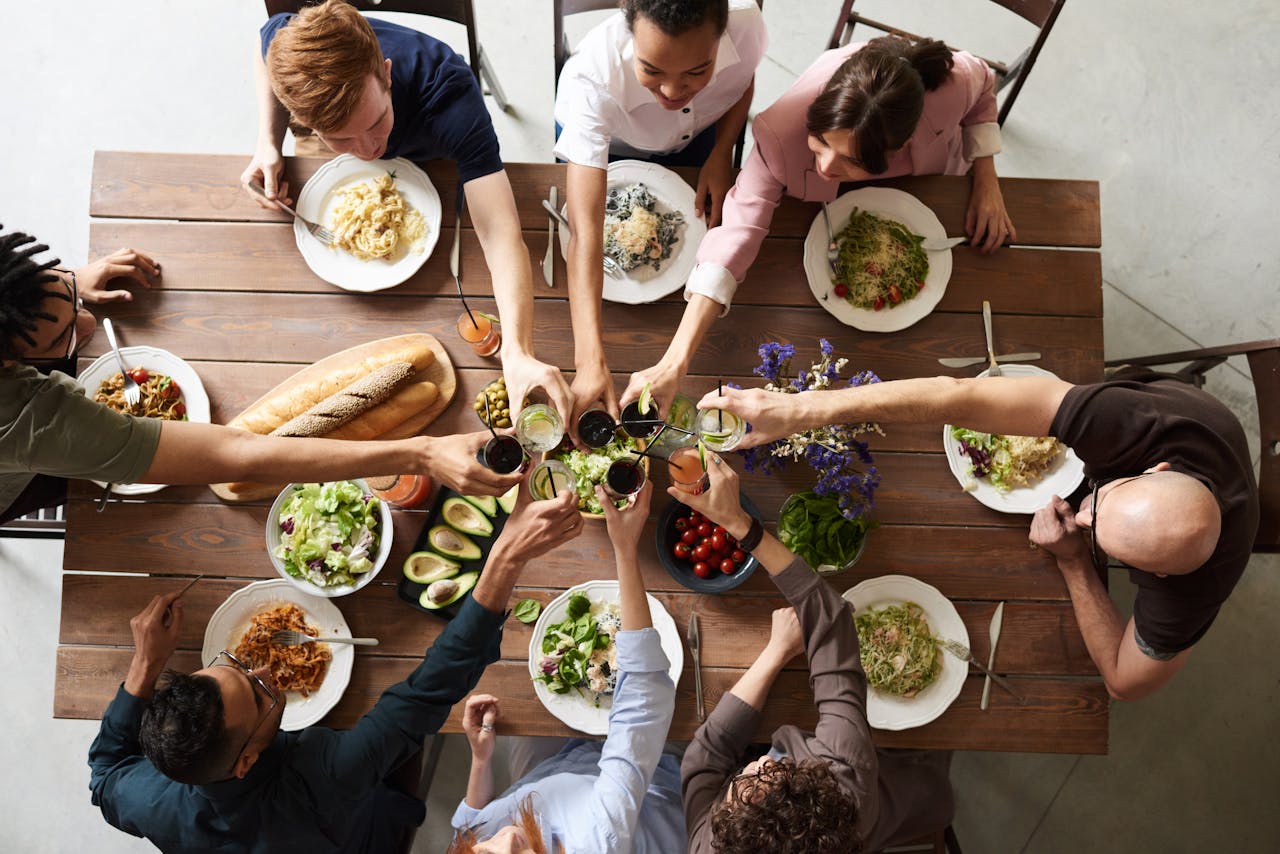
Food in Milan isn’t always loud or showy. It’s quiet confidence, refined simplicity, and deliberate detail – just like the city itself. You’ll notice this in the subtle bite of a gorgonzola risotto, the balance of sweetness in an artisanal panettone, or the graceful way an elderly vendor wraps a wedge of aged Parmigiano in wax paper.
Whether you’ve spent your time nibbling on street snacks or rolling pasta in a Brera kitchen, you’ve likely noticed Milan’s culinary depth – it’s not about excess. It’s about experience.
Now, let’s talk about how to keep that experience smooth, connected, and ready for wherever your taste buds take you next.
VOYE15: For Smarter Solo Travel
Enjoy Milan on your terms with exclusive Voye savings
Seamless Travel Begins with Smart Connectivity
Modern travel is powered by more than luggage and guidebooks. Today’s travelers rely on digital access for directions, bookings, translations, payments, and even finding hidden food gems. The faster and more secure your mobile connection, the more immersive your journey can be.
That’s why seasoned travelers often skip physical SIMs and instead opt for eSIM technology – a virtual SIM that activates instantly, keeps your original number safe, and connects you to local data networks without visiting a shop.
Why Choose Voye Global for Your Travel eSIM?
Reliable Coverage, Local Speed
Voye Global offers high-speed data plans in Italy and across Europe – ideal for everything from booking your next cooking class to navigating Milan’s alleyways toward a hidden food market.
No Physical SIM Required
With Voye’s eSIM, there’s no swapping cards or risking damage to your phone. Just scan, activate, and you’re online in minutes.
Instant Activation
Purchase online, scan the QR code, and activate before or after landing. You’re in control of when and how you connect.
Great for Food Travelers
Whether live-streaming your cooking class, using Google Translate in a market, or finding real-time reviews of gelato shops nearby, a Voye Global eSIM gives you the power to explore deeply – without worrying about roaming charges.
Benefits of Using Voye Global eSIM in Milan
- Stay connected across the city and nearby regions
- Find your way through street food festivals and local kitchens
- Access online booking platforms and chef-led experiences
- Translate menus, labels, and vendor conversations on the spot
- Easily share your experience on social platforms, blogs, or with loved ones
What Makes Voye Global Stand Out?
- Transparent pricing – no hidden charges
- Custom coupon codes like VOYE15 to help you save
- Friendly customer support with multilingual assistance
- Compatible with most unlocked smartphones (iOS & Android)
Already trusted by thousands of global travelers – and content creators – who want more from their trips than just sightseeing.
Final Thoughts: Travel Well, Savor Deeply
Exploring Milan through food is about more than just tasting dishes – it’s about connecting with people, culture, and place. From grabbing panzerotti in a bustling alley to kneading fresh pasta alongside a local chef, every experience adds depth to your journey. When you’re equipped with the right tools – like a reliable eSIM for staying connected – your travels become easier, more informed, and more enjoyable.
Let Milan feed your curiosity as much as your appetite. Savor slowly, explore locally, and use smart tech like Voye Global to stay one step ahead on every delicious detour.
Digital Tools for Digital Nomads
Perfect for solo explorers who need speed, safety, and support
FAQs – Travel & Tech Made Easy
1. Do I need to speak Italian to enjoy food tours or markets?
No, most hosts and vendors speak some English. A translation app helps with anything tricky.
2. Is Voye Global’s eSIM easy to activate?
Yes. Just scan a QR code and you’re connected in minutes – no physical SIM needed.
3. Can I use one eSIM across Italy and other European countries?
Voye offers both country-specific and regional plans that work across Europe.
4. Are the cooking classes beginner-friendly?
Definitely. Most classes are casual, hands-on, and perfect even if you’ve never cooked before.
5. What’s the best day to visit local food markets in Milan?
Try Tuesdays or Saturdays early morning for the freshest produce and local buzz.
6. How do I know if my phone supports eSIM?
Check your phone settings or the Voye Global website — most modern phones are compatible.
7. Why should I use an eSIM instead of relying on public Wi-Fi?
Public Wi-Fi can be unreliable or insecure. With Voye’s eSIM, you stay safely connected anywhere.
Seamless Mobile Data Everywhere
